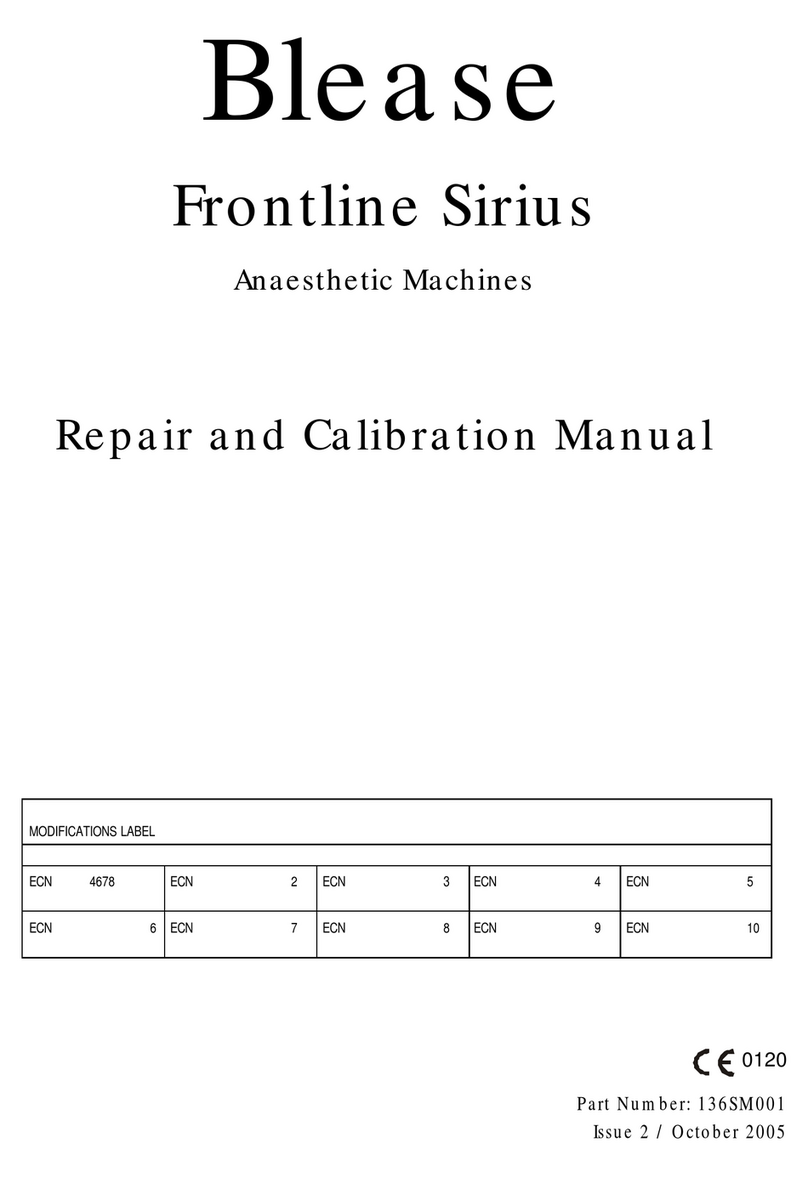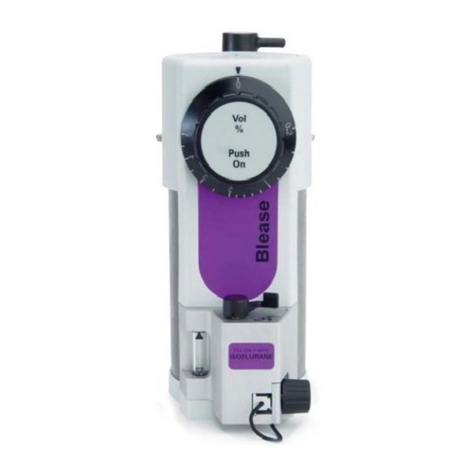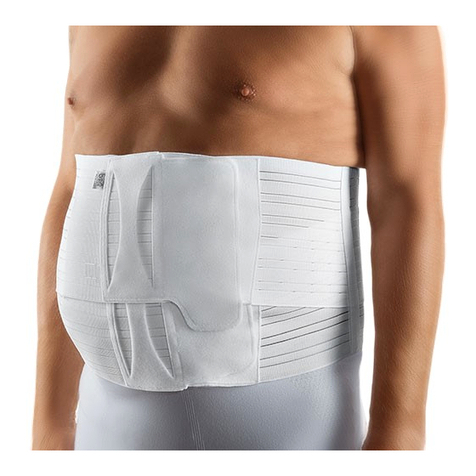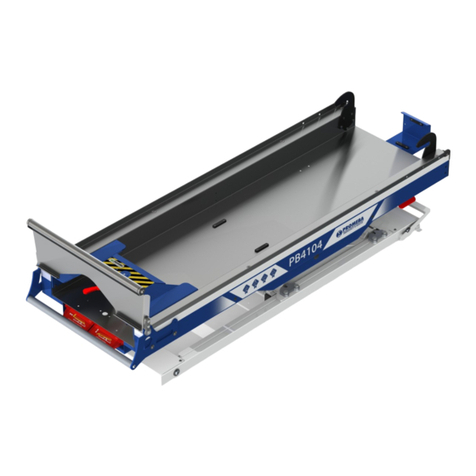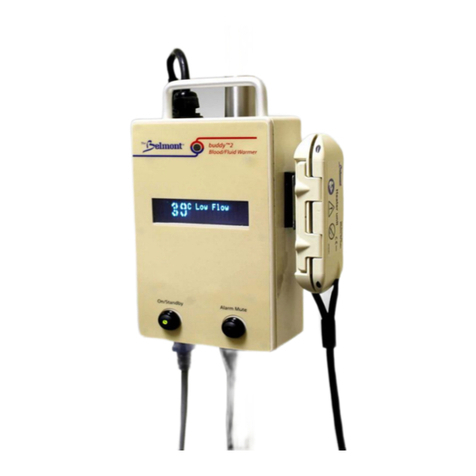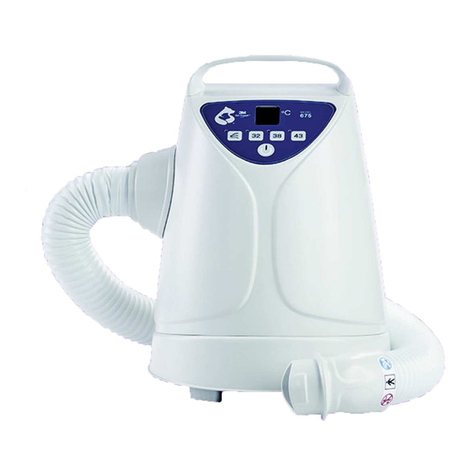Blease Sirius 3000 User manual

FrontlineSirius
AdvancedAnaesthesiaSystems
Sirius3000
Sirius2000
Sirius1000
FirstLineandPlannedMaintenanceManual

1First Line and Planned Maintenance Manual
Frontline Sirius®
Blease
Frontline Sirius
Anaesthetic Machines
First Line
and
Planned Maintenance Manual
Part Number: 136SM000
Issue 2 / November 2005
0120
MODIFICATIONS LABEL
ECN 1
4676
ECN 2
ECN 3
ECN 4
ECN 5
ECN 6
ECN 7ECN 8ECN 9ECN 10

2First Line and Planned Maintenance Manual
Frontline Sirius®
Important
Read this manual before operating or servicing the machine.
Read the vaporizer manual before operating the machine.
For all users and Service Personnel, refer to the User Manual before
operating the machine.

3First Line and Planned Maintenance Manual
Frontline Sirius®
Table of Contents
Product Improvement..................................................................................................................7
Responsibilities of the Manufacturer.......................................................................................7
Disclaimer.......................................................................................................................................7
Note to Service Personnel...........................................................................................................8
Copyright.........................................................................................................................................8
CE Marking......................................................................................................................................8
Trademarks and Acknowledgements.......................................................................................9
Symbols and Abbreviations........................................................................................................10
Hazard Notices ..............................................................................................................................11
Warnings .........................................................................................................................................12
Electrostatic Sensitive Devices (ESD) Warnings and Cautions............................................13
Ventilator.........................................................................................................................................14
Vaporizer.........................................................................................................................................15
1. Technical Description.......................................................................................................17/22
1.1 Description..................................................................................................................................................................22
1.1.1 General.............................................................................................................................................................. 22
1.1.2 Pneumatic Assembly................................................................................................................................22
1.1.3 The Frame.......................................................................................................................................................22
1.1.4 The Monitor Shelf.......................................................................................................................................22
1.1.5 AGSS..................................................................................................................................................................23
1.1.6 Suction..............................................................................................................................................................23
1.1.7 Absorber..........................................................................................................................................................23
1.1.8 Ventilator ......................................................................................................................................................... 23
1.2 Specification................................................................................................................................................................27
1.2.1 Machine Dimension..................................................................................................................................27
1.2.2 Work surface Dimensions...................................................................................................................... 27
1.2.3 Maximum Loading.....................................................................................................................................27
1.3 Pneumatics..................................................................................................................................................................27
1.3.1 Gas Specific Colour Specification......................................................................................................27
1.3.2 Electrical Cable Colour Specifications............................................................................................. 28
1.3.3 Gases..................................................................................................................................................................28
1.3.4 Common Gas Outlet................................................................................................................................ 28
1.3.5 Technical Performance Specification............................................................................................... 29
1.3.5.1 Controls.............................................................................................................................................29
1.3.5.2 Ventilator ..........................................................................................................................................29
1.3.5.3 Alarms/Indicators.........................................................................................................................30
1.3.5.4 Regulator Safety Valve Settings............................................................................................30
1.3.5.5 Supplies..............................................................................................................................................30
1.3.5.6 Environmental................................................................................................................................ 30
2. Pre Use Testing........................................................................................................................31
2.1 Pre Use Check............................................................................................................................................................32
2.2 Cylinder and Pipeline Supplies.........................................................................................................................32
2.3 Flowblock Assemblies............................................................................................................................................ 32
2.4 Oxygen Failure Warning System Check....................................................................................................... 32
Introduction

4First Line and Planned Maintenance Manual
Frontline Sirius®
2.5 Leak-test Vaporizers................................................................................................................................................33
2.6 Ventilator.......................................................................................................................................................................33
2.7 Absorber Pre-use Check.......................................................................................................................................34
2.8 Checking Anaesthesia Equipment...................................................................................................................37
2.8.1 Procedures......................................................................................................................................................38
2.9 Checklist.........................................................................................................................................................................44
3. Full System Testing................................................................................................................49
3.1 Full System Test.........................................................................................................................................................50
3.1.1 Leak Test ..........................................................................................................................................................50
3.1.2 On/Off Switch and warning System Checks...............................................................................51
3.1.3 Mechanical Hypoxic Guard Test.........................................................................................................52
3.1.4 Oxygen Flush Tap Test.............................................................................................................................52
3.1.5 Auxiliary Outlet Test ..................................................................................................................................52
3.1.6 Vaporizer Test...............................................................................................................................................52
3.1.7 Ventilator Test...............................................................................................................................................52
3.2 Pre-Use Testing..........................................................................................................................................................53
3.2a Pre-Use Test Error Messages.................................................................................................................56
3.3 Pre-use Testing 6700 Ventilator.......................................................................................................................59
4. Maintenance............................................................................................................................61
4.1 Cleaning and Sterilisation...................................................................................................................................62
4.1.1 Main Unit.......................................................................................................................................................62
4.1.2 Absorber.........................................................................................................................................................62
4.1.3 Peep Valve.....................................................................................................................................................63
4.1.4 Ventilator Surface......................................................................................................................................63
4.1.5 Pop-off Valve Seat....................................................................................................................................63
4.1.6 patient Airway Flow Sensor................................................................................................................65
4.1.7 Bellows............................................................................................................................................................65
4.1.8 Methods of Sterilisation........................................................................................................................66
5. Routine Maintenance............................................................................................................67
5.1 Routine Maintenance...........................................................................................................................................68
5.1.1 Weekly Checks............................................................................................................................................68
5.1.1.1 Control Unit.................................................................................................................................68
5.1.2 Six-Monthly Checks..................................................................................................................................68
5.1.2.1 Bellows............................................................................................................................................68
5.1.2.2 Other Maintenance..................................................................................................................68
5.1.2.3 Exchanging Fuses......................................................................................................................68
6. Planned Maintenance...........................................................................................................71
6.1 Routine Maintenance...........................................................................................................................................72
6.1.1 Planned Preventative Maintenance..................................................................................................72
6.1.1.1 Service Schedule.........................................................................................................................72
6.1.1.2 Every 6 Months...........................................................................................................................72
6.1.1.3 Every 12 Months........................................................................................................................72
6.1.1.4 Every 48 Months........................................................................................................................72
6.1.2 Detailed Maintenance Checks...............................................................................................................73
6.1.3 Overall Visual Inspection..........................................................................................................................73
6.1.4 Visual Inspection...........................................................................................................................................73
6.1.5 Structural...........................................................................................................................................................73
6.1.6 Castors................................................................................................................................................................74
6.1.7 Drawer Operation........................................................................................................................................74

5First Line and Planned Maintenance Manual
Frontline Sirius®
6.1.8 Common Gas Outlet (fixed) Oxygen Flush Operation...........................................................74
6.1.9 Ancillary Equipment and Mountings.................................................................................................74
6.2 Pipeline Leak Test ....................................................................................................................................................75
6.3 Suction System Test...............................................................................................................................................75
6.4 Scavenging Test.........................................................................................................................................................75
6.5 Cylinder Leak Tests..................................................................................................................................................75
6.6 Hypoxic Guard...........................................................................................................................................................76
6.7 Switch / Anti-Confusion / Oxygen Monitor / Oxygen Failure / Oxygen Flush....................76
6.8 Lighting..........................................................................................................................................................................77
6.9 Absorber........................................................................................................................................................................77
6.10 Ventilator .....................................................................................................................................................................78
6.11 Checklist and Calibration Record...................................................................................................................80
7. Fitting Planned Maintenance Kits......................................................................................81
7.1 Removal/Replacement Instructions................................................................................................................87
7.2 Fitted Planned Maintenance Kit........................................................................................................................95
7.3 Bodoc Seals ..................................................................................................................................................................95
7.4 Backbar Seals...............................................................................................................................................................95
7.5 Backbar Dzus Springs..............................................................................................................................................95
7.6 Absorber Stop/O2 Probe ‘O’ Ring...................................................................................................................95
7.7 Pipeline Fitting and ‘O’ Ring................................................................................................................................95
7.8 AGSS Probe and Float............................................................................................................................................97
7.9 Bellows Base/Cover.................................................................................................................................................98
7.10 Pop-off Valve.............................................................................................................................................................98
7.11 Absorber....................................................................................................................................................................100
7.11.1 Valve Covers .............................................................................................................................................100
7.11.2 Manometer................................................................................................................................................100
7.11.3 Canister Seals...........................................................................................................................................100
7.12 Fitting a 4 Year Planned Maintenance Kit 13600531 .......................................................................101
7.12.1 Ventilator Filter and O Ring..............................................................................................................101
7.12.2 Cylinder Regulator.................................................................................................................................102
7.13 Servicing.....................................................................................................................................................................102
8. First Line Planned Maintenance Parts.............................................................................105
8.1 First Line Planned Maintenance Parts List ................................................................................................106

6First Line and Planned Maintenance Manual
Frontline Sirius®
List of Figures
Figure 1 Frontline Sirius 3000..............................................................................................18
Figure 2 Frontline Sirius 2000 and 1000 ...........................................................................20
Figure 3 Pneumatic Circuit (manifolded)..........................................................................24
Figure 4 Attaching Absorber Tubing...................................................................................34
Figure 5 Exploded Diagram of Absorber...........................................................................35
Figure 6 Removing the Pop-off Valve................................................................................63
Figure 7 Peep Pop-off Valve Assembly..............................................................................69
Figure 8 Sirius Annual Planned Maintenance..................................................................82
Figure 9 Sirius 4 Year Service Kit.........................................................................................84
Figure 10 AGSS...........................................................................................................................97
Figure 11 Pop-off Valve............................................................................................................98
Figure 12 Bellows Assembly ...................................................................................................99
Figure 13 Pneumatic Module..................................................................................................101
Figure 14 Primary Regulator...................................................................................................103

7First Line and Planned Maintenance Manual
Frontline Sirius®
Product Improvement
Blease Medical Equipment Limited has a policy of continued product improvement and
therefore reserves the right to make changes which may affect the information contained
in the manual without giving prior notice.
Responsibilities of the Manufacturer
The manufacturer accepts responsibility for the effects on safety, reliability and performance of
the equipment only if:
• assembly operations, extensions, adjustments, modifications and repairs are
carried out by persons with written authorisation from the manufacturer;
• the equipment is used in accordance with the instructions for use;
• the electrical installation of the relevant room complies with the ‘Regulations for
the Electrical Equipment of Buildings’.
NB
If during the warranty period the equipment is serviced by an unauthorised
party, the warranty will be void.
Disclaimer
Opening of the control unit by unauthorised personnel automatically voids all warranties and
specifications. The prevention of tampering is solely the user's responsibility; the manufacturer
assumes no liability for any malfunction or failure of the ventilator if the control unit is opened.
The instructions in this manual assume that the engineer is familiar with and has
had training in the servicing and care of anaesthetic equipment and is able to use
pressure gauges, flowmeters and other laboratory equipment.
Blease accept no responsibility or liability for any patient injury or adverse
circumstances which may arise from unauthorised maintenance of Blease Frontline
Sirius Machines.

8First Line and Planned Maintenance Manual
Frontline Sirius®
Note to Service Personnel
The Frontline Sirius®and integrated equipment must only be serviced by Qualified Service
personnel.
The contents of this manual are not binding. If any significant difference is found between the
product and this manual please contact Blease Medical Equipment Limited for further
information.
To ensure correct functioning, the equipment must be serviced at regular intervals.
Blease Medical Equipment Limited recommends that the machine should be serviced at
intervals not exceeding six months. Qualified Service Personnel and genuine spare parts should
be used for all servicing and repairs. Blease Medical Equipment Limited will not otherwise
assume responsibility for the materials used, the work performed or any possible consequences
of the same.
In communication with Blease Medical Equipment Limited, quote the model and serial number
of the equipment, with the approximate date of purchase. If the equipment is being returned
for repair, indicate the nature of the fault or the work you require to be carried out.
Contact:
Blease Medical Equipment Limited
Beech House •Chiltern Court •Asheridge Road •Chesham •Buckinghamshire HP5 2PX •
England
Tel: +44 (0)1494 784422
Fax: +44 (0)1494 791497
e-mail (technical): [email protected]
www.blease.com
Copyright
©2005, Blease Medical Equipment Limited. E & OE.
All rights reserved. The information contained in this publication may not be used for any other
purpose than that for which it was originally supplied.
This publication may not be reproduced in part or in whole without the written consent of
Blease Medical Equipment Limited.
CE Marking
The product is labelled with the CE mark. 0120

9First Line and Planned Maintenance Manual
Frontline Sirius®
Trademarks and Acknowledgements
The following symbols and acknowledgments may appear in Blease product manuals:
is the trademark of Abbott Laboratories.
Da-LitesTM is a trademark of Blease Medical Equipment Limited UK.
Datum® is a registered trademark of Blease Medical Equipment Limited UK.
Dowty is a trademark of Dowty Seals Limited.
Draeger is a trademark of Draegerwerk AG Germany.
Dzus is a trademark of Dzus Fasteners Limited.
Fomblin® is a registered trademark of Rocol Limited.
Frontline Sirius 1000®is a registered trademark of Blease Medical Equipment Limited.
Frontline Sirius 2000® is a registered trademark of Blease Medical Equipment Limited.
Frontline Sirius 3000® is a registered trademark of Blease Medical Equipment Limited.
Legrand® is registered trademark of Legrand Electric Limited.
Loctite® is a registered trademark of Loctite Corporation USA.
Megger is a trademark of AVO Megger Instruments Ltd.
Plug-in® is a registered trademark of Draegerwerk DAG Germany.
Quik-Fil® is a trademark of Abbott Laboratories.
Rigel is a trademark of Seaward Electronics Ltd.
Scotchbrite® is a registered trademark of 3M.
SELECTATEC® is a registered trademark of Ohmeda/BOC UK Ltd.
Snoop® is a registered trademark of the Nupro® Company Ohio USA.
Trak Wheel ®is a registered trademark of Blease Medical Equipment Ltd.

10 First Line and Planned Maintenance Manual
Frontline Sirius®
Symbols and Abbreviations
bpm BPM
cmHO
CPAP
PEEP
2
l/m lpm
ml
O
psi
psig
l
Breaths per minute
Gauge pressure expressed in centimetres of water
Continuous positive airway pressure
Positive end expiratory pressure
IEC symbol to consult the instructions for use
Airway Pressure Limiting
Power off
Power on
Dangerous voltage
Litres per minute
Millilitres
Oxygen
Pounds per square inch
Pounds per square inch gauge
Litres
IEC symbol for alternating current
Confers approval under theEuropean Medical Device Directive
End of Case
2
A ratio of inspiratory to expiratory time
Turning the control in the direction of the thickening line,
an increase in that parameter is produced
I:E Ratio
APL
IEC symbol denoting type of equipment (B)
WARNING: There is danger of personal injury to the
user or patient
Further relevant or helpful information
E of C
This symbol indicates that the waste of electrical and electronic
equipment must not be disposed as unsorted municipal waste
and must be collected separately. Please contact an authorized
representative of the manufacturer for information concerning
the decommissioning of your equipment.

11First Line and Planned Maintenance Manual
Frontline Sirius®
Hazard Notices
This handbook contains important hazard information. You must read this hazard
information before using the Frontline Sirius®.
Warning Notices
Warning notices denote a potential hazard to the health and safety of users and/or
patients. These notices clearly state the nature of the respective hazard and the
means by which it can be avoided.
Warning notices appear in full in the preliminary pages and are repeated at their
points of application in the manual.
Caution Notices
Cautionary notices denote a potential hazard to the physical integrity of
equipment/software but NOT a danger to personnel. These notices clearly state
the nature of the hazard and the means by which it can be avoided.
Cautionary notices appear in full in the preliminary pages and are repeated at their
points of application in the manual.
Relevant or helpful Information

12 First Line and Planned Maintenance Manual
Frontline Sirius®
Warnings
The following statements are made to comply with the requirements of IEC 60601-1.
1. This equipment must only be connected to gas pipeline supply lines that are fitted with
pressure relief valves that limit the supply pressure to less than 7 bar.
2. The functioning of this machine may be adversely affected by the operation of equipment
such as high frequency surgical (diathermy) equipment, defibrillators or shortwave therapy
equipment in the vicinity. Increasing the distance from such equipment will minimise any
possible interference.
3. Prior to connecting the machine to a patient carry out the pre-use check to verify correct
alarm operation. To verify the O2 alarm, set the flowmeters to give a concentration of 50%
oxygen. Using the controls on the oxygen monitor panel, set the low oxygen level to 60%
and verify the oxygen low alarm operates. Set the high oxygen alarm level to 40% and
verify that the oxygen high alarm operates.
4. The oxygen flow can only be reduced to zero by turning the ON/OFF switch to the OFF
position. Excessive force on the oxygen control knob may damage the hypoxic guard.
5. To avoid explosion hazards, flammable anaesthetic agents such as ether and cyclopropane
must not be used in these machines. Only anaesthetic agents which comply with the
requirements on non-flammable anaesthetic agents in IEC 60601-2-13 ‘Specification for
Anaesthetic Machines’, are suitable for use in these machines.
6. As these machines are not suitable for use with flammable anaesthetic agents such as ether
and cyclopropane the use of antistatic breathing tubes and face masks is not necessary.
The use of antistatic or electrically conductive breathing tubes when utilising high frequency
surgery equipment may cause burns and is therefore not recommended in any application
that involves such apparatus.
7. The equipment must be periodically checked and maintained to ensure proper operation.
8. Performance of the equipment may be affected at temperatures below 10oC (50oF) and
above 40oC (104oF).
9. The performance of the anaesthetic machines and vaporizers may be degraded if the two
are mismatched. Refer to the vaporizer manufacturer’s instruction manual before use.
10. If the integrated oxygen analyser is not fitted, an oxygen analyser complying with ISO 7767
shall be used when the anaesthetic machine is in use.
11. The units use semiconductor devices which are susceptible to damage by overloading,
reversed polarity, electrostatic discharge and excessive heat or radiation. Avoid hazards
such as reversal of batteries, prolonged soldering, strong RF fields or other forms of
radiation, use of insulation testers or accidentally applied short circuits. Even the leakage
current from an unearthed soldering iron may cause trouble.

13First Line and Planned Maintenance Manual
Frontline Sirius®
Electrostatic Sensitive Devices (ESD)
Warnings and Cautions
All ESD must be stored in approved conductive packaging, tubes, shipping bags, foam or tote
bins.
All persons handling ESD must be properly grounded via a 1MW resistive grounded wrist strap.
Cover all ESD bench tops with grounded conductive mats and connect all work surfaces and
equipment to earth ground.
Transport all assemblies containing ESD in a conductive bag or container.
DO NOT use cellophane adhesive tape to wrap DIP (dual in-line package) tubes together.
DO NOT handle ESD by their pins or mix them with other routine electronic parts.
Never place ESD on ungrounded surfaces or leave them unattended in an open area.
Avoid cellophane wrappers, synthetic (non-conductive) carpeting, warm or cool air blasts,
Styrofoam coffee cups, etc when working with ESD.
Use only properly designed heat lamps, heat chambers and/or ‘antistatic’ quick-chill sprays
during troubleshooting or stress testing procedures.
NB
In particular electronic assemblies in the Frontline Sirius®range of machines are easily damaged
by ESD and require special handling.
Cautions
Anaesthetic Machines
Do not leave gas cylinder valves open if the pipeline supply is in use and the system master
switch is turned ON. Pressures from both supplies may become equal and, if simultaneously
used, cylinder supplies could be depleted, leaving an insufficient reserve supply in case of
pipeline failure.
The hypoxic guard control system only ensures that oxygen-nitrous mixtures will have a
minimum oxygen concentration. HYPOXIC MIXTURES MAY BE DELIVERED IF GASES OTHER
THAN OXYGEN, NITROUS OXIDE OR AIR ARE USED, OR WHEN OPERATING AT LOW
OXYGEN FLOW RATES. When using carbon dioxide, as an additional gas, make sure the
proportions of all gases are carefully adjusted in accordance with accepted clinical practice. Gas
mixtures within the breathing system must be monitored when using these gases.

14 First Line and Planned Maintenance Manual
Frontline Sirius®
Leaking gases and vapours (downstream of the flow control valves and Oxygen Flush valve)
may deprive the patient of metabolic gases and anaesthetic agent may pollute the atmosphere.
Tests that detect leaks must be performed frequently. If detected, leakage must be reduced to
an acceptable level.
Do not use the anaesthesia system if the hypoxic guard control system does not operate within
permitted ranges. Using an incorrectly operating control system may result in incorrect gas
mixtures and injury to the patient.
When occluding the breathing system for test purposes, do not use any object small enough to
slip completely into the system. Objects in the breathing system can interrupt or disrupt the
delivery of breathing system gases, possibly resulting in injury to the patient. Before using the
breathing system on a patient, always check the breathing system components for foreign
objects.
Do not place materials weighing more than 25kg on the bottom shelf, or more than 25kg on
the upper monitor shelf. Overloading may cause damage to the shelves or cause instability.
Secure any equipment placed on the shelves.
To avoid stripping threads, do not use tools on the yoke gate T screws. Use only one cylinder
gasket per yoke. Using more than one gasket could cause cylinder gas leakage.
Ventilator
The volume sensor must be correctly installed at either the distal location in the patient system’s
expiratory limb or the proximal end of the Y connector. If the sensor is installed incorrectly,
volume data will be inaccurate and associated alarms, including the low minute volume alarm
will not function properly.
Position the volume sensor’s cable with care. If the cable is pinched or cut, the ventilator’s
volume monitoring may not function correctly.
Do not connect the ventilator or absorber exhaust directly to a vacuum source. The vacuum
may remove required gases from the breathing system. (Only applies to Frontline Sirius 1000®
and 2000®).
Ventilator inoperative messages indicate that a problem exists in the ventilator. Do not attempt
to use the ventilator while a ventilator message is displayed.
Do not attempt to use the ventilator if the alarm mute button will not silence alarms.
WARNING: If an alarm condition cannot be resolved, do not continue to use the
system.
Sterilise the bellows assembly periodically to minimise the risk of cross infecting patients. Use a
sterilization schedule that complies with your institution’s infection control and risk
management policy. Only use Blease approved sterilization methods. As mentioned in section 4.
If any foreign materials or liquids are trapped in the driving gas circuit, or the pop off valve or
the bellows base they could impair the valve’s operation. Do not use the bellows assembly if

15First Line and Planned Maintenance Manual
Frontline Sirius®
you suspect that materials are trapped. Have the assembly repaired by trained service
personnel.
Perform the Pre-Use Check procedures after cleaning and sterilizing the bellows.
Always perform the Pre-Use Check procedures for volume sensing functions after cleaning or
replacing the volume sensor.
Vaporizer
Do not use any vaporizer that is visibly misaligned on the manifold or that, when it is locked,
can be lifted off the manifold. Incorrect mounting may result in incorrect delivery of gases.
A vaporizer is calibrated and labelled for one agent only. Do not fill with anything other than
the designated agent.
If a vaporizer is filled with the wrong agent, draining will not eliminate the agent, because the
wick will have absorbed some of the agent. The wick must be thoroughly cleaned and dried by
trained service personnel.
The vaporizers must be completely upright for the sight glass to properly indicate agent levels.
Never oil or grease any oxygen equipment unless the lubricant used is made and approved for
this type of service. In general, oils and greases oxidise readily, and -in the presence of oxygen -
will burn violently. Fomblin is the recommended oxygen service lubricant (stock number
ST7014).
After performing any maintenance or repair procedure, always verify proper operation of the
system before returning to use.
Use cleaning solution sparingly. Do not saturate system components. Excessive solution can
damage internal devices.
Following ethylene oxide sterilization, quarantine the equipment in a well ventilated area to
allow dissipation of absorbed ethylene oxide gas. In some cases, aeration periods of seven days
or more may be required. Aeration time can be decreased when special aeration devices are
used. Follow the sterilizer manufacturer’s recommendations for aeration periods required.

16 First Line and Planned Maintenance Manual
Frontline Sirius®
Notes

17First Line and Planned Maintenance Manual
Frontline Sirius®
1.0 Technical Description
1. Technical Description

18 First Line and Planned Maintenance Manual
Frontline Sirius®
Figure 1 Frontline Sirius®3000
1. Technical Description
L
A
B
C
D
E
F
G
H
I
J
K
M
N
O
P
Q
R
S
T
1. Technical Description

19First Line and Planned Maintenance Manual
Frontline Sirius®
Key to Figure 1
AMonitor shelf
BVentilator
CIndependent O2Flowmeter (only on the 3000 model)
DVaporizer
ECylinder/Pipeline Gauges
FPneumatic Unit -(behind gauge panel)
GHandle
HOxygen Flush
ICommon Gas Outlet
JWriting Table
KDrawer
LFrame
MSuction Receiver Jar
NAnaesthetic Gas Scavenging System (AGSS)
OAbsorber
PBellows
QSuction Controller
RMain On/Off or Off, N2O/Air Interlock Switch
SFlow Control Valves with Hypoxic Guard
TFlowblock Assembly
1. Technical Description
This manual suits for next models
2
Table of contents
Other Blease Medical Equipment manuals
Popular Medical Equipment manuals by other brands
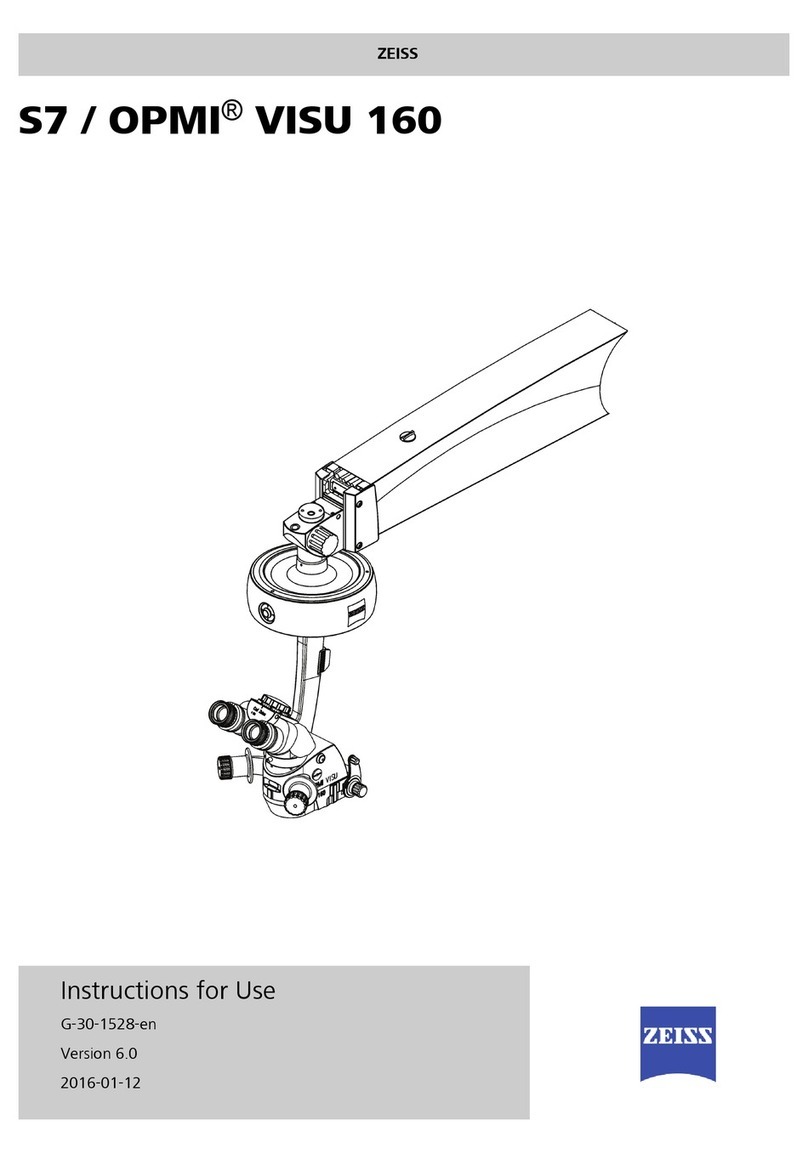
Zeiss
Zeiss S7 / OPMI VISU 160 Instructions for use
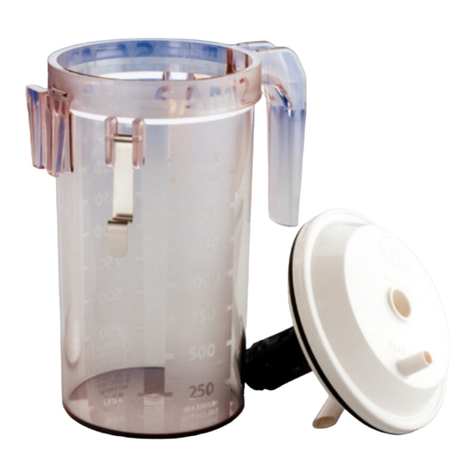
MGE UPS Systems
MGE UPS Systems SA 2 Operating and maintenance manual
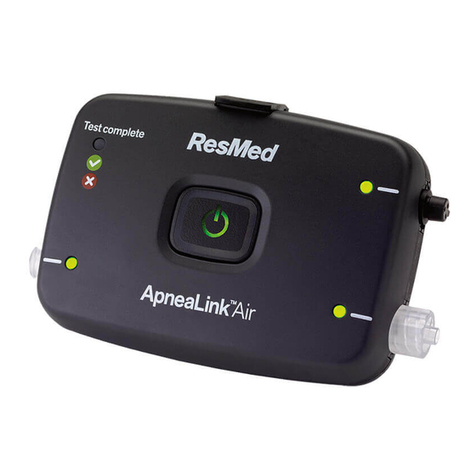
ResMed
ResMed ApneaLink instructions
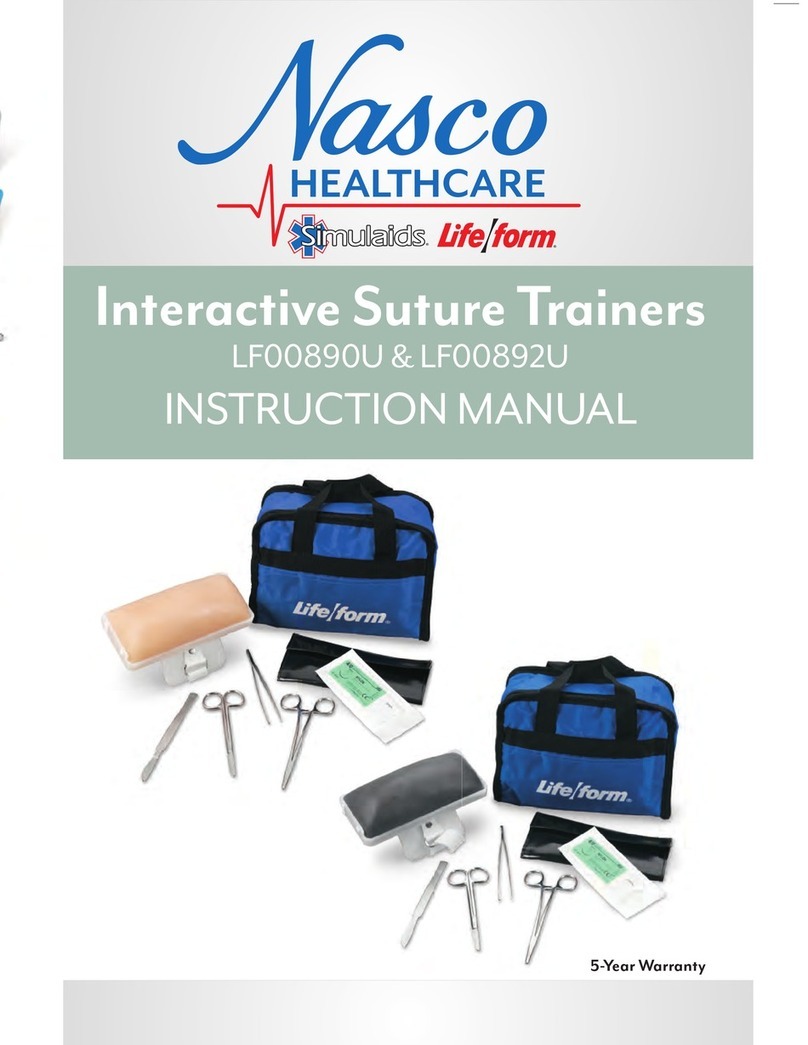
Nasco
Nasco Life/form LF00890U instruction manual
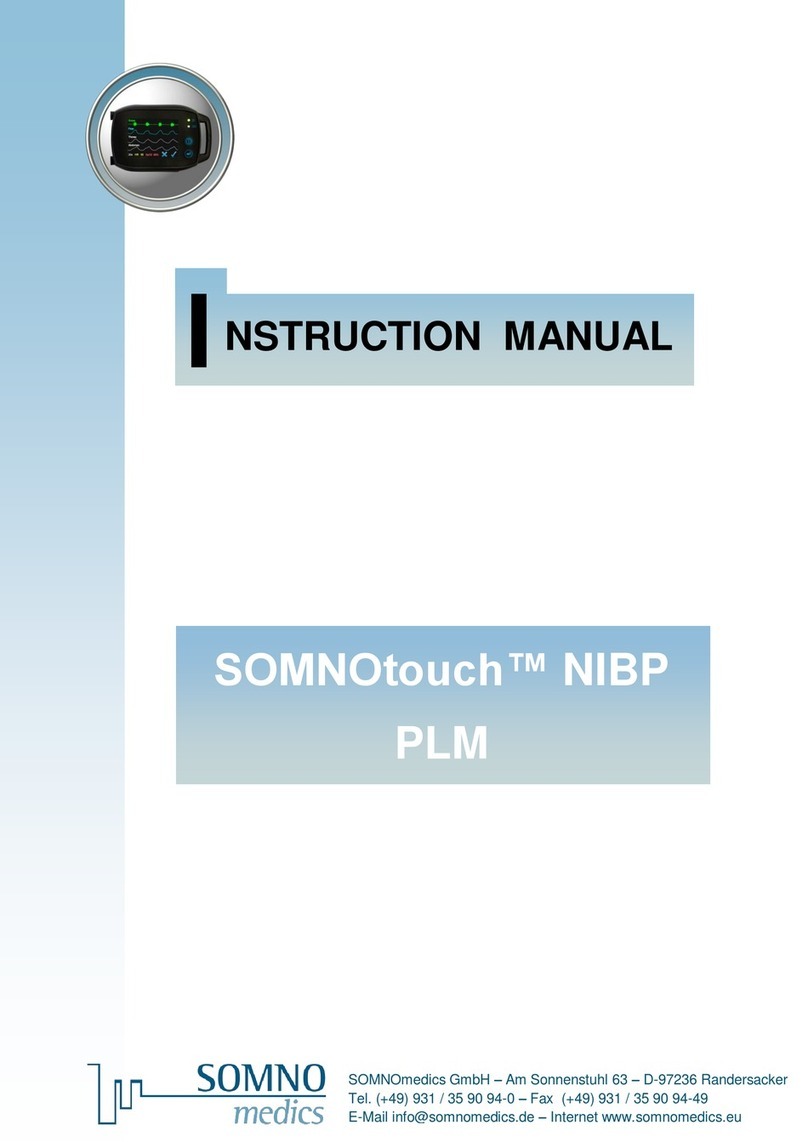
SOMNOmedics
SOMNOmedics NIBP PLM instruction manual

Invacare
Invacare Aquatec BELUGA Assembly instructions
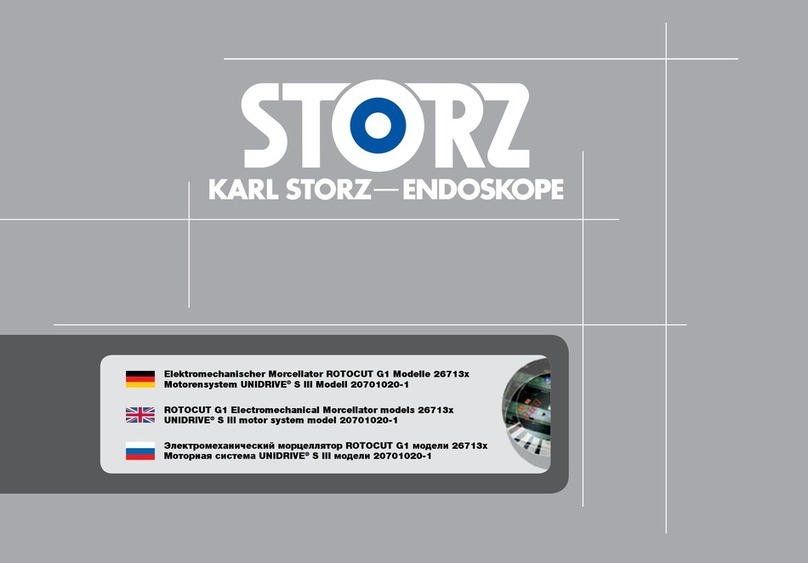
Karl Storz
Karl Storz ROTOCUT G1 26713 Series manual
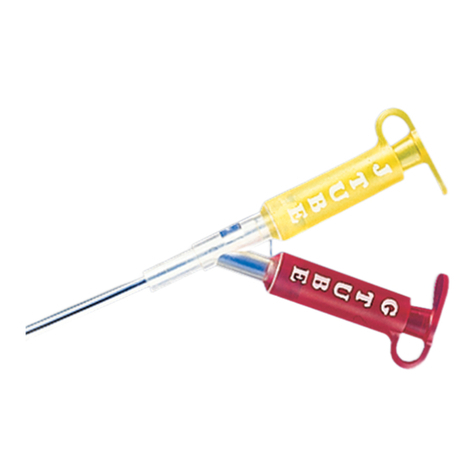
COOK Medical
COOK Medical FLOW J manual

Novametrix Medical Systems
Novametrix Medical Systems 515 Service manual

Ossur
Ossur Power Knee Instructions for use
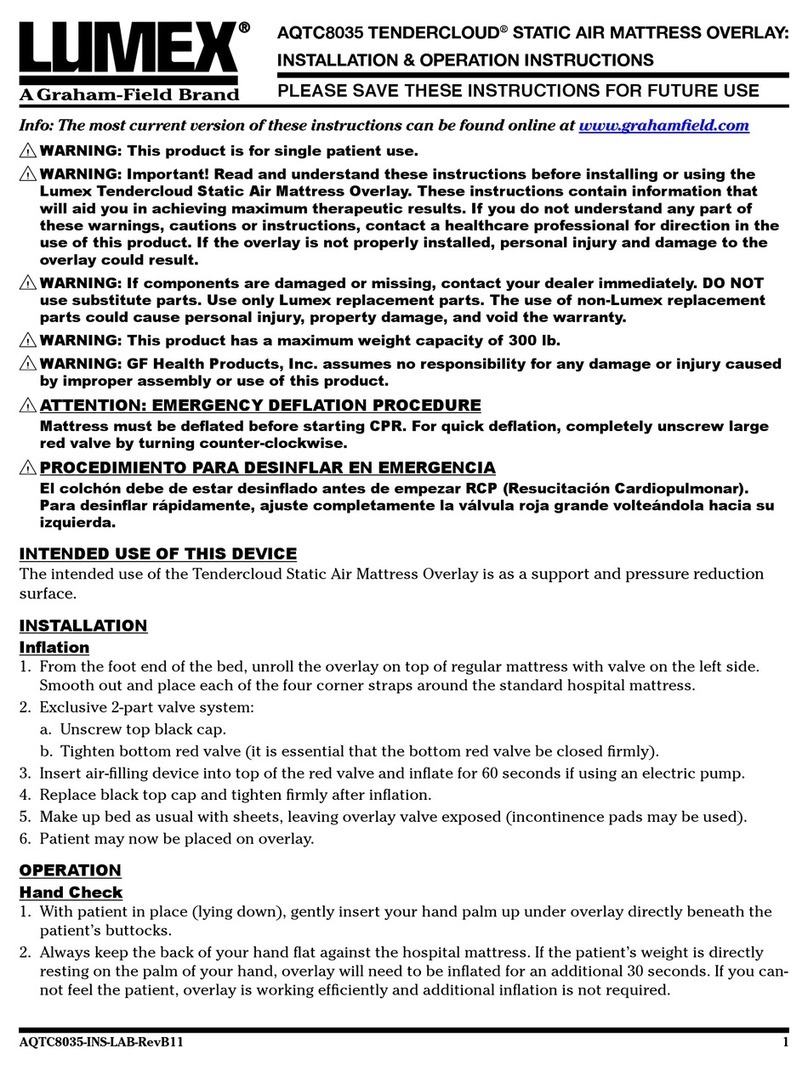
Graham Field
Graham Field LUMEX TENDERCLOUD AQTC8035 Installation & operation instructions
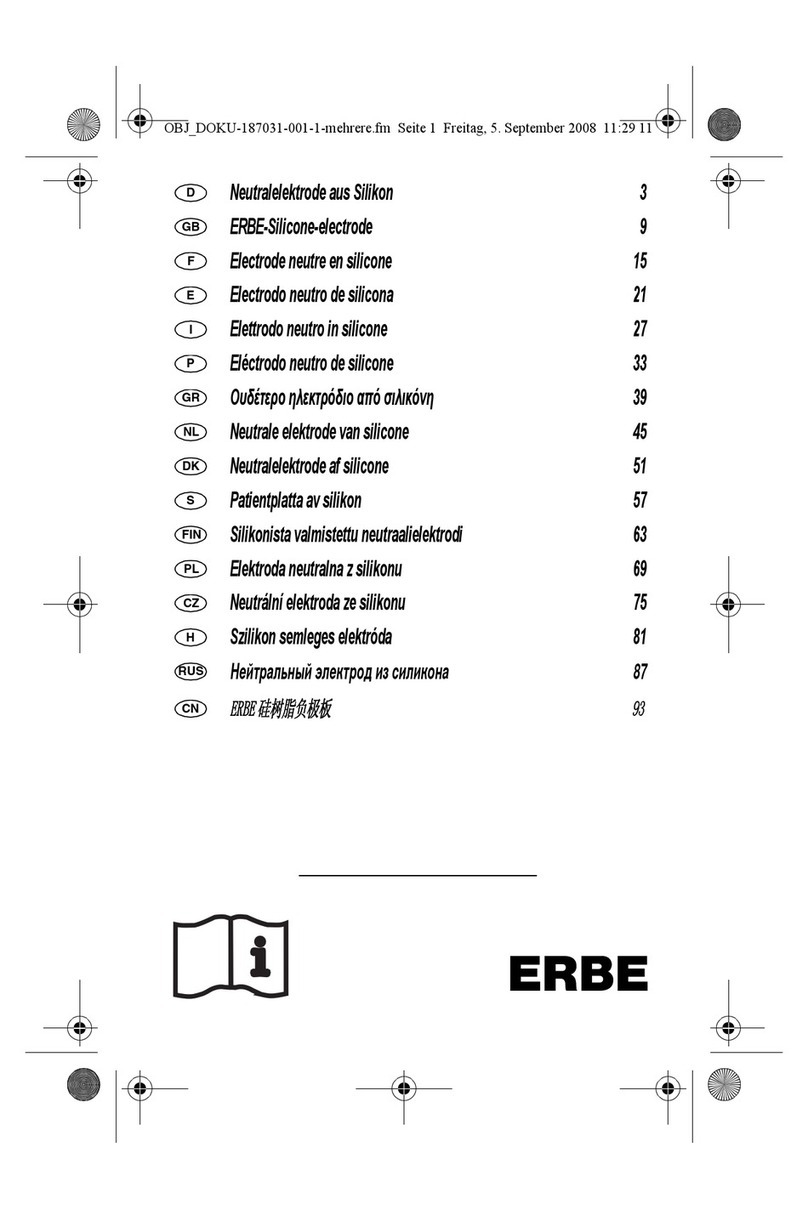
Erbe
Erbe 20193-008 Notes on Use
